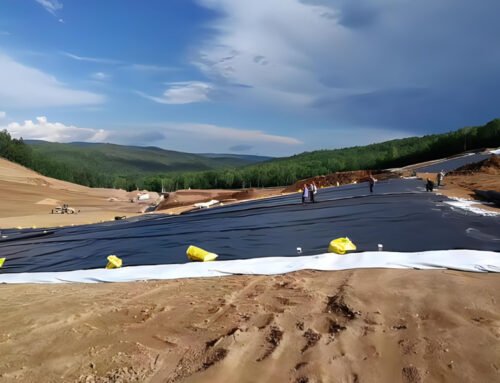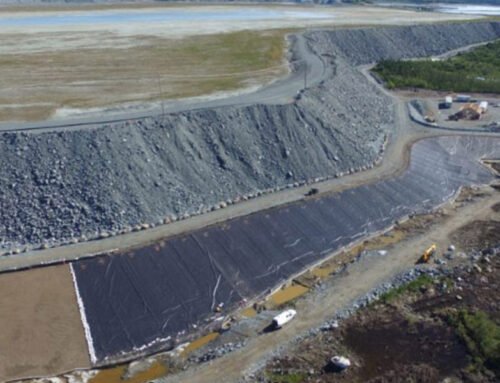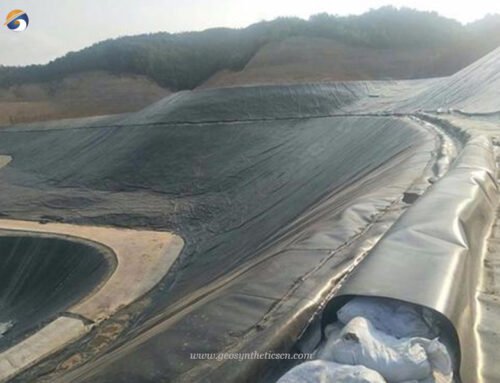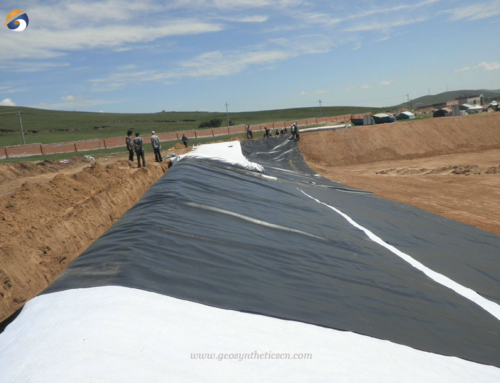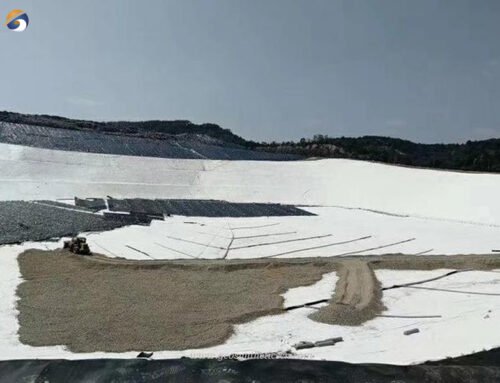HDPE pond membrane, also known as HDPE geomembrane pond liner, is exceptional durability and flexibility, along with excellent resistance to chemicals and corrosion. These pond membranes are available in smooth or textured surfaces, with thickness options ranging from 20 mil to 120 mil.
GEOSINCERE specializes in custom fabricating pond membranes to meet specific size and project requirements. As the preferred choice for lining projects, GEOSINCERE HDPE pond membranes provide reliable and long-lasting solutions. Whether it’s for residential, commercial, or industrial applications, these membranes offer a trusted barrier for ponds, ensuring effective containment and protection of water resources. With GEOSINCERE’s expertise and quality products, customers can confidently choose HDPE pond membranes for their lining needs.
1. What Is A HDPE Pond Membrane?
An HDPE pond membrane is a type of waterproof plastic liner that is commonly used for lining projects worldwide. It is made from high-density polyethylene (PE) and other polymer materials. The thickness of HDPE pond membranes can range from 20 mil to 120 mil, with the most commonly used specifications being 0.5mm to 2mm.
The primary function of an HDPE pond membrane is to prevent seepage and provide an effective barrier. It is widely utilized in various industries and applications, including landfills, sewage treatment plants, agricultural water storage, petrochemical facilities, aquaculture ponds, reservoir dams, and more. In these projects, the HDPE pond membrane serves the purpose of preventing seepage and providing isolation, ensuring the containment and protection of liquids or waste materials.
HDPE pond membrane plays a crucial role in maintaining the integrity and efficiency of various projects by preventing seepage and providing a reliable barrier against leaks and contamination.
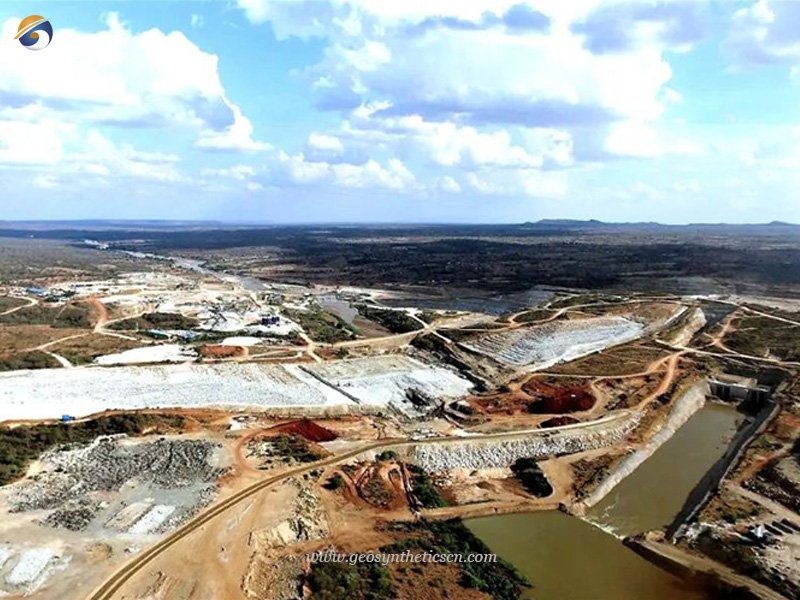

2. What Are Benefits of HDPE Pond Membrane Kenya for Reservoir Project
The HDPE pond membrane used in reservoir projects in Kenya possesses several key characteristics that contribute to its effectiveness and suitability:
2.1 Good anti-seepage performance
The reservoir geomembrane, made from polymer materials, exhibits excellent impermeability, effectively preventing water leakage.
2.2 Strong corrosion resistance
Reservoirs often contain water with corrosive elements. By utilizing a geomembrane composed of materials with strong corrosion resistance, the long-term durability of the reservoir is ensured.
2.3 Good aging resistance
The HDPE pond membrane is enhanced with special additives, providing it with robust resistance against aging. This feature guarantees a prolonged service life for the geomembrane.
2.4 Convenient construction
HDPE pond membranes can be prefabricated into various coil sizes and specifications, allowing for easy customization and on-site installation. This convenience simplifies the construction process.
2.5 Low Cost
Compared to traditional methods such as cement concrete, HDPE pond membranes offer a cost-effective solution for seepage prevention. The installation and construction processes are simpler, saving on labor, materials, and time costs.
3. How To Install HDPE Pond Membrane?
During the transportation of HDPE pond membrane, it is important to handle them with care and avoid dragging or subjecting them to excessive force that could cause damage. Sharp objects that could potentially puncture or tear the geomembrane should be avoided.
When extending the HDPE pond membrane from the bottom to the top, it is crucial not to pull it too tightly. Approximately 1.50% of the remaining width should be left to accommodate local subsidence and allow for tension adjustment. The direction of laying should be determined based on the specific project conditions, with the slope laid from top to bottom if appropriate.
To ensure proper installation, it is recommended that adjacent longitudinal joints do not align horizontally but instead should be staggered by at least 1 meter. Additionally, the longitudinal joint should be positioned at least 1.50 meters away from the dam foot or elbow foot and be located on a flat plane.
When laying the geomembrane on slopes, the direction of the HDPE pond gmembrane should be parallel or close to parallel with the maximum slope line. This alignment helps to optimize the effectiveness and stability of the installation.
By following these guidelines for transportation and installation, the integrity and functionality of the geomembrane can be preserved, ensuring reliable performance in preventing seepage and enhancing the overall success of the reservoir project.
4. What Is The Lifespan of HDPE Pond Membrane?
HDPE Geomembrane are buried in the ground, can only let nature take its course, geomembrane is difficult to degrade naturally, if the project is renovated or used for other purposes, can only be cleaned up when the garbage, some very troublesome. But the geomembrane did little damage to the environment. The service life of geomembrane is mainly determined by whether the plastic film is impermeable and waterproof. According to the relevant scientific research units, the thickness of impermeable polyethylene film is 1.5mm plus stabilizer, and the working life can reach 40 to 50 years under clear water conditions, and the working life is 30 to 40 years under sewage conditions. Therefore, the service life of geomembrane is enough to meet the service life of aquiculture engineering seepage control requirements.
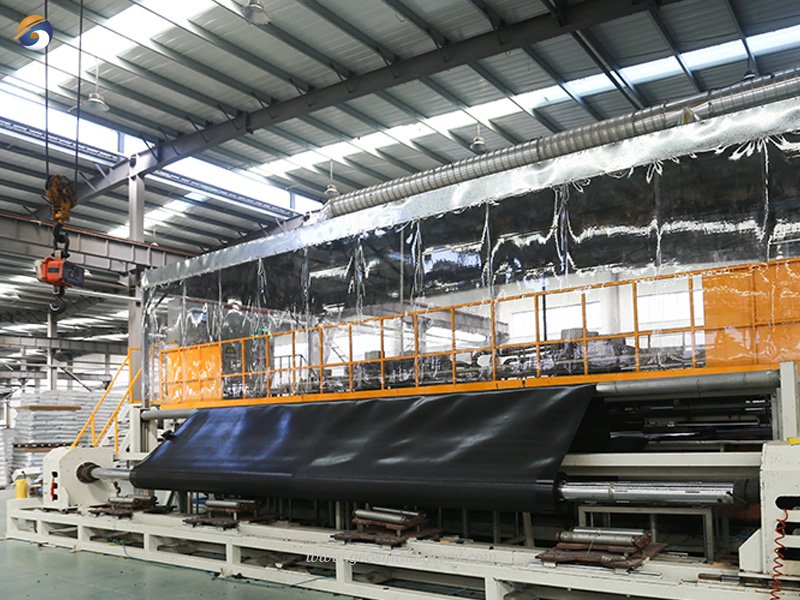
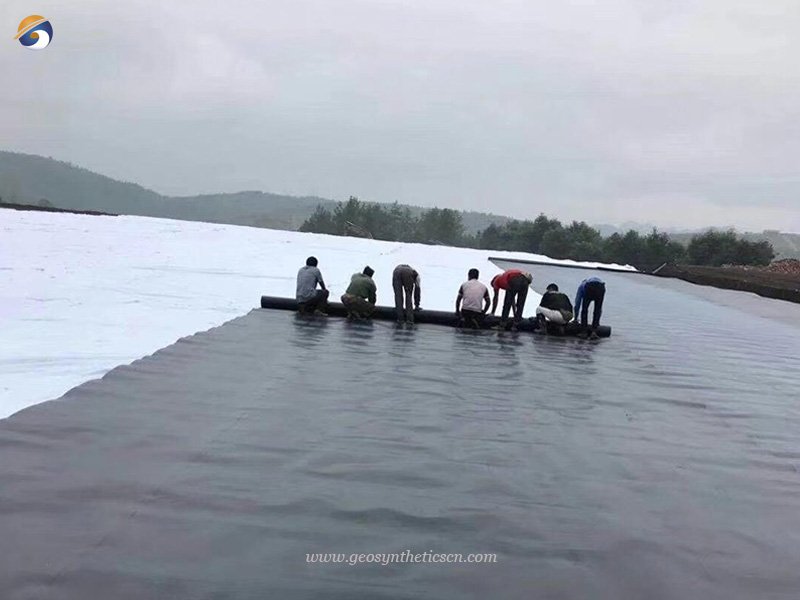
5. Case Study of HDPE Pond Membrane for Reservoir Project in Kenya
In Kenya, a large-scale hydropower complex project required the use of HDPE pond membrane for seepage control. The remote location and cost-effectiveness led to the selection of HDPE pond membrane for reinforcing the reservoir’s upstream slope and addressing seepage. With its excellent properties and flexibility, a 1.5mm thick HDPE pond membrane was recommended and tested successfully, resulting in an order of 100,000 square meters. The specified material adhered to ASTM standards and came in rolls measuring 7m by 140m. Effective communication, technical knowledge, and rigorous testing played a crucial role in securing the project and meeting customer requirements.
6. About GEOSINCERE
GEOSINCERE has been dedicated to manufacturing geomembrane and geosynthetics products and solutions to worldwide customers since its foundation in 2007. Our main innovative, high quality products include geotextiles, geomembranes, geogrids, geocells, geosynthetic clay liners, and drainage boards, etc al. GEOSINCERE offers both high quality geosynthetic products but also professional design and installation service. OEM, ODM, custom development and fabrication are also available. If you have any questions or inquiries, please contact us, we will reply as soon as possible.

